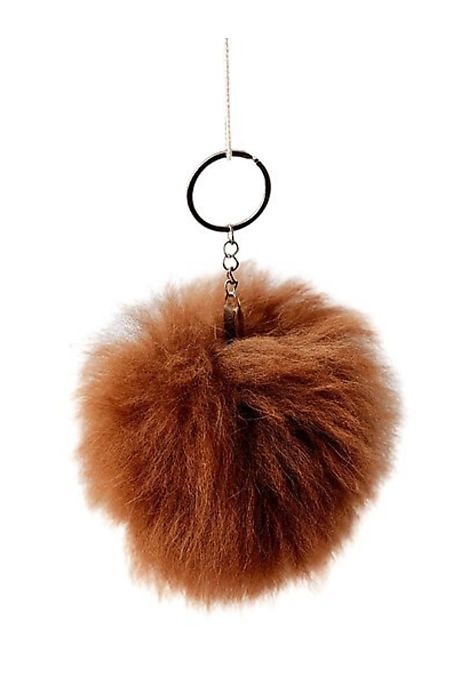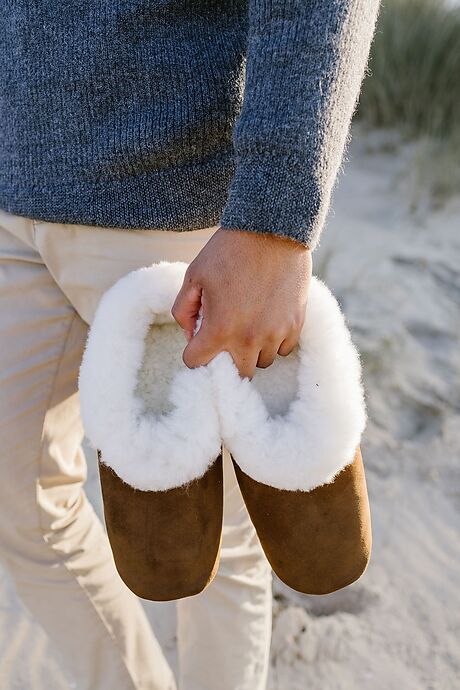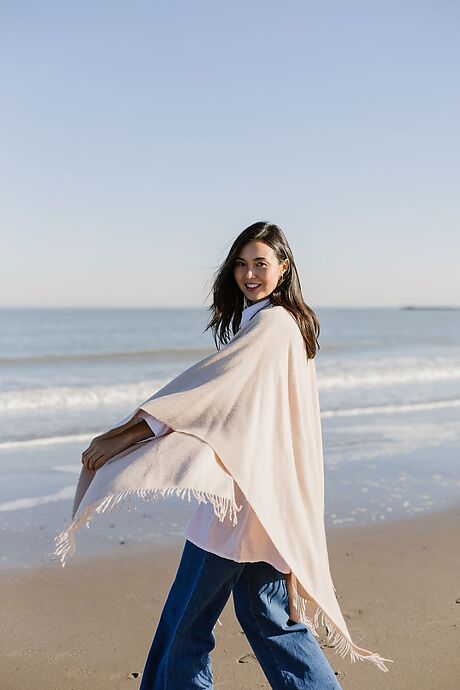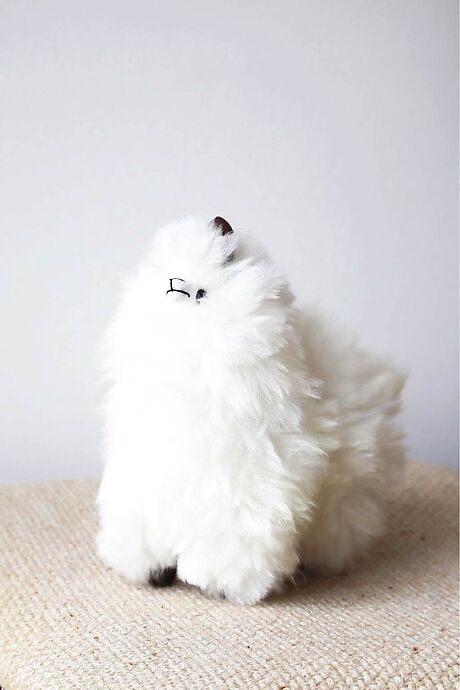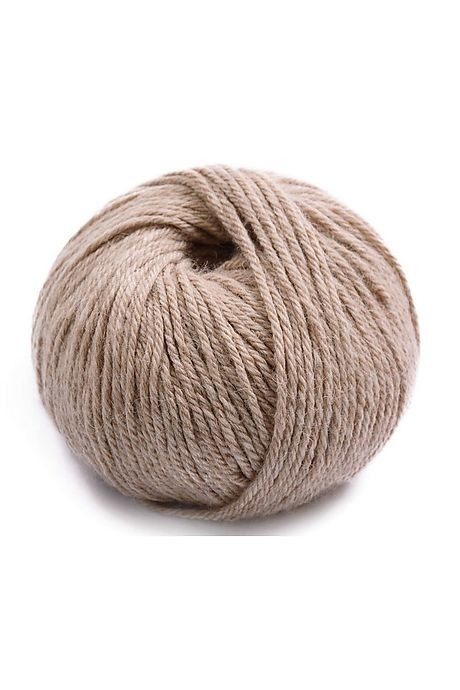Baby alpaca
Perhaps you have already heard of the alpaca, that animal so cute that you would think it was straight out of a cartoon? At Bellepaga, the alpaca is without surprise our favorite animal. Indeed, since we met this little camelid and all its benefits, we can not do without it!
Moreover, it is revered where it was born and likes to reside: in countries high in beauty and summits such as Bolivia and Peru. At Bellepaga we use the wool from the majestic alpacas, and more precisely the precious "baby alpaca" fiber, to create warm and light but above all resistant and soft clothes.
Now that you know a little more about alpaca, how about learning more about the exceptional fiber that is baby alpaca? We promise that after reading all this, you will be able to proudly say that you know baby alpaca wool and its virtues inside out!
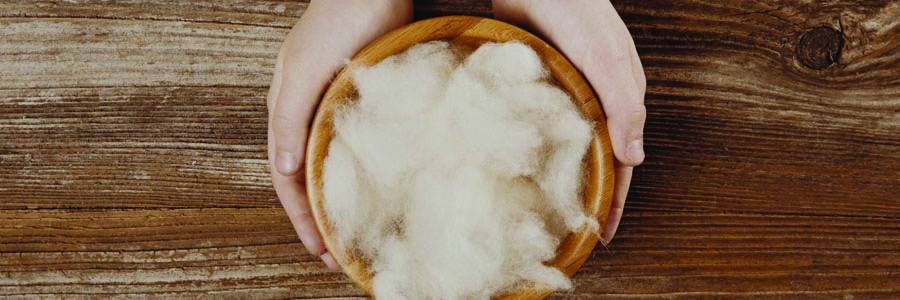
Baby Alpaca: what is it?
First of all, no need to panic! Baby alpaca is not necessarily a fiber taken from babies! In fact, baby alpaca is the name that has been given to the precious down that is hidden underneath the "classic" alpaca wool. And unlike cashmere, which is also a highly coveted underfur (from goats), the amount of baby alpaca fiber that can be harvested from a single camelid can sometimes reach up to 2 kg. (In comparison, a goat will only be able to produce a maximum of 80 grams of cashmere per year.)
Moreover, the benefits of baby alpaca wool are innumerable: seven times warmer and more insulating than sheep's wool, baby alpaca wool is also softer, less heavy, more resistant (to humidity as well as to other external hazards) and softer and silkier than the latter! So many advantages, isn't it?
Let's get back to our sheep, or should I say our alpacas, and more precisely to their shearing. These well-coated animals are sheared once a year when the first heat starts: either between the arrival of spring and the beginning of summer, depending on the location of our cute herd. This "ritual" allows the alpacas not to suffer from the high temperatures and to feel lighter. As for the frequency of shearing (once a year), it allows the wool of our little marvels to be renewed for the next season because it grows back only 1 cm per month.
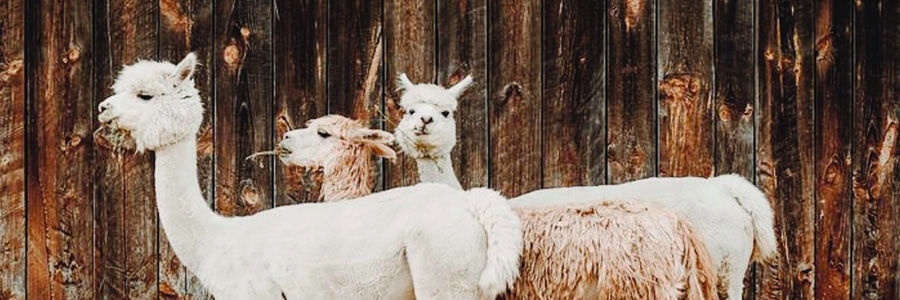
During shearing, our little mammals lie down, surrounded by the breeders and tied by the legs to avoid being cut or injured by the shears. This annual practice yields approximately 1.5 to 2.5 kg of baby alpaca wool per animal and 3 kg of alpaca wool. This amount depends on the age of the animal, its health and the conditions in which it is raised. The older the animal gets, the more its fleece loses its fineness but a young alpaca shorn for the first time, around the age of one year, will produce less wool, usually less than 1kg.
The baby alpaca is one of the most qualitative layers of alpaca wool, after the "Royal Alpaca". Indeed there are different layers of wool which are sorted according to their qualities, in general we distinguish five. These are not sold at the same price and are not used to produce the same clothes. Baby alpaca wool is the one we use at Bellepaga because it is the softest, strongest and warmest layer of wool available in terms of price and quantity that alpaca has. All these qualities are due to the particular fineness.
Indeed, the supreme rarity of the "Royal Alpaca" unfortunately does not allow us to satisfy our production... Moreover, not all alpacas can provide such a fineness of fleece. If alpaca wool can have a thickness of up to 30 microns, baby alpaca is the second finest harvested fiber: it measures between 14 and 23 microns (= 0.0014mm and 0.0023 mm). For comparison, the diameter of a hair is about 60 microns.
At Bellepaga, baby alpaca is the only wool used for the creation of our garments because it is the one that best embodies the hypoallergenic, thermoregulatory, insulating, soft and resistant properties of alpaca wool, again, while remaining affordable. All our products are made in Peru with a real know-how.

The baby Alpaca
The alpaca is the smallest animal of the camelid family (which includes the llama, the camel, the guanaco, the vicuna and the dromedary). In fact, its height at the withers is around 75 cm and can reach 1 m for the biggest ones. As for its weight, it is generally around 70-75 kg for the male and 60 kg for the female.
You probably have a very precise image in your head of what an alpaca looks like, but you should know that there are two very different kinds. There is the one that "everyone knows", the one that is fluffy and whose wool resembles that of a sheep: the Huacayo alpaca (which represents 85% of the livestock). And the Suri alpaca, which has long hair (it represents 15% of the herd) with its fleece in the form of tangled strands that hangs over its entire body.
Concerning the baby alpacas, they are not the "baby alpacas" but the crias. These big babies take almost a year to be born, and once they are born they are already covered with several centimeters of down and weigh between 6 and 9 kg! Because of the imposing size of this infant, the female generally gives birth to only one cria at the same time (it is extremely rare to see twins being born).
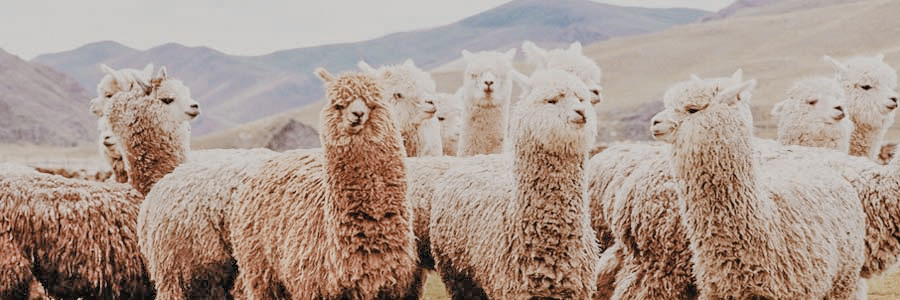
Adopt the Alpaca
If we succeeded in convincing you to switch to baby alpaca wool, but you don't have the desire or the means to buy this marvelous camelid because of its huge price (between 2 500 and 30 000 euros), its particular maintenance or because of a lack of space: you should know that we sell balls of wool so that you can make your own little hat, socks or even a nice sweater by the fire!
However we are aware that knitting is sometimes complicated. Indeed, the simple choice of needle is extremely determining for the rendering of your future masterpiece. There are two elements to take into account when making a piece: the length of the needle and its thickness. The longer your needle, the easier it will be for you to put stitches in it, so it is strongly recommended to use long needles if you knit large pieces for a question of speed and manageability. As for the width, this will define the thickness of your piece: the smaller the diameter, the tighter the stitch and vice versa.
In the needle market you can find diameters ranging from 2mm to 25mm. Since baby alpaca wool is particularly fine, we recommend using a needle with a thickness between 2.5 and 3.5 mm. The 2.5 mm needle for a long ball and the 3.5 mm needle for a shorter ball. However, you may have heard of the "5 needle", because this is the thickness that is most often used, as people who like to make small wool pieces often use wool with a medium thickness.
If you are not fortunate enough to have learned to knit or you simply never did, don't worry, we have everything you need! Ponchos, sweaters, hats, mittens, scarves, plaids, stuffed animals, keychains and even quilts: at Bellepaga you are bound to find something you like !

BellePaga allows you to live a unique experience with its Baby Alpaca wool products. Your well-being is very important to us. That's why we take care to make eco-friendly and very comfortable clothes. Discover our women's collection and also our men's collection in alpaca! You can also find our products for Home&Deco. We offer you high quality products because you deserve it.
-
Alpaca fur key ring
-
Suni Scarf
-
La Paz Slippers
- 35
- 36
- 37
- 38
- 39
- 40
- 41
- 42
- 43
- 44
- 45
- 34
- 46
- 47
-
Warmi Poncho
-
Alpaca Soft Toy 23 cm - Frida
-
Alpaca Yarn


